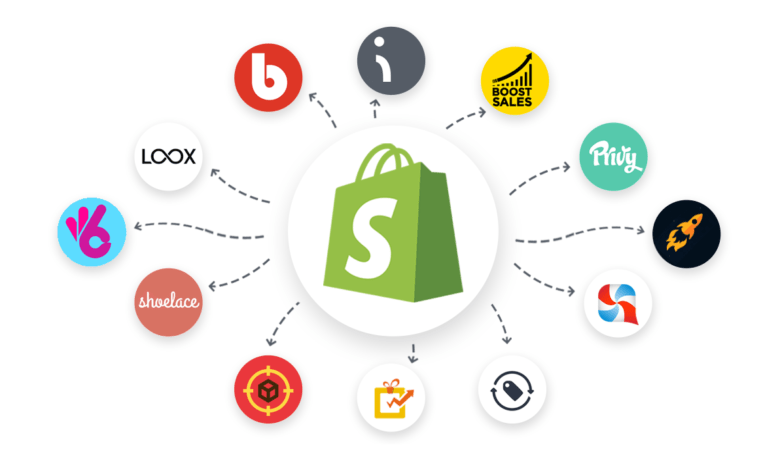Shopify’s new eCommerce market’s direct-to-consumer sales in India are rising dramatically, and it must surpass the competition if it is to go further in 2022.

Starting a new internet business has never been easier, and as a result of the outbreak, technological advances have made this process simpler. Many direct-to-consumer (D2C) companies have flourished this year in India thanks to Shopify, a Canadian e-commerce technology startup. Sixty-six per cent revenue increase and a net profit margin of 5.4 per cent have brought Shopify India to profitability.
Shopify’s Indian customer base has been gradually growing since the outbreak began, with around 10,800 businesses enrolled (in the first quarter of March 2020). There are now over 31,000 active members on Store Leads, an e-commerce database. One in five of these stores still focuses on clothing brands, but 10% of them are devoted to “beauty and fitness” products.

After announcing its third-party app store and its network of Web designers who served as Shopify partners for potential customers, the Indian venture capital and private equity-backed brand, Shopify was at the forefront of a new wave of direct-to-consumer brands India in 2020 when we wrote about the company. Sandeep Komaravelly, Shopify India’s country manager, said that the company’s key focus would be on increasing volume by signing up more businesses and generating subscription revenue.
As a result of services provided to its sister firms, the Indian branch made a significant amount of money in fiscal year 21. However, subscriptions were the most important income source.
In response to a questionnaire provided to clients, Shopify India did not react.
What is Shopify’s next step? Recruiting entrepreneurs who don’t necessarily serve a wealthy urban clientele in one of the country’s top eight to ten metro regions is an emerging frontier in the online registration of businesses. Most of India’s small and medium-sized enterprises are run by tiny family firms, local Kirana stores and supermarkets, and regional brands well-known in a specific region or small town (SMEs). Two years after the epidemic, they’ve begun to recognize the need of going online. As it happens, Shopify will be thrilled. Bad news for company owners: the number of ways they can grow their companies online has increased significantly.
Everyone wants a piece of India’s vast consumer and retail market, primarily unorganized and controlled by micro, small, and medium-sized firms, but ripe for the picking (MSMEs). Startups like SoftBank-backed Meesho and Flipkart’s Shopsy persuade small business owners to create an online firm by leveraging their networks to obtain their resources. These bets have emerged as major ones.
Facebook has made a significant investment in WhatsApp when it comes to business. It is a stark contrast to JioMart owner Mukesh Ambani’s Reliance Industries, which has invested in Dunzo, a hyperlocal delivery platform for Indian Kirana stores.
So yet, Shopify’s customers are primarily urban businesses that operate solely online. According to Store Leads data (NCR), many existing Shopify India stores are based in Mumbai, Bangalore, and the National Capital Region, Store Leads information (NCR).
The next step in the process is the creation of a finished product.
Every company competing for dominance wants to bring the next generation of entrepreneurs with established offline enterprises online. Shopify social media marketing may be beneficial in many circumstances, but it isn’t always the best option for every business. It may not be the most excellent solution for all consumer businesses.
Femora, a Jaipur-based home and kitchen goods company founded by Manushree Khandelwal, says no “big” or “small” channel for its business. She continues, “We don’t consider anyone channel to be huge or tiny, but rather a means to be where the customer is,” she says. Compared to marketplace compensation schemes, direct-to-consumer (D2C) marketing is prohibitively expensive. Running your own company while also making it financially viable is a demanding task.

According to Khandelwal, the amount of capital in every consumer sector is so significant that everyone is spending a lot of money. In recent years, marketing and consumer acquisition costs have soared. To get a piece of this D2C pie, “we have to battle against the big elephants and the well-funded startups,” she says.
Low-cost online entry and development are critical priorities for many small, family-run businesses that are bootstrapped or family-run in the first place. An Indian Shopify competitor called Shopaccino is handling Femora’s direct-to-customer operations in Jaipur.
In addition to the monthly membership price, Shopify also charges a fee of a percentage of all transactions. This is an important distinction. The one-time cost of Shopaccino’s subscription plan does not change with the size of the customer’s business.
Since 2014, Gulmohar Lane, a Jaipur-based retailer of high-end furniture and home décor, has worked with Shopaccino to expand its online presence.
As the firm puts it, “We’ve always wanted a website with a lot of customization options.” “This [luxury furniture] is a very specialized sector,” says Saurabh Ailawadi, co-founder and managing director of Gulmohar Lane.
On a single page, the firm claims to provide customers with several options and add-ons, such as the ability to change the legs of a piece of furniture and whether or not a sofa should be tufted to seem like a chair. In 2014, when we initially started utilizing Shopify to construct our website, we didn’t have access to these adjustments. In addition to user design, “Shopaccino was really helpful in personalizing many areas of our company,” he says.
It is possible to recruit consumers such as local Kirana shops or supermarkets in a particular area with services such as Shopaccino, LoveLocal, Dunzo, and Instamojo. Instamojo’s payment-gateway firm has become a stand-in for small businesses that sell on Instagram in a particular city or neighbourhood. Local artisanal items, nursery and bakery companies, and crafts firms run by a single person are just a few examples.
As Shopaccino’s founder and CEO, Vishal Singhal, notes, “In the last year, more and more consumer categories have shifted online.”. There’s a growing number of instances like this. “Until now, I had only heard of internet sales of clothes and cosmetics.” Any offline model may now be sold online, regardless of where it came from. For example, we’re currently working on an online store for a firm specializing in selling natural stone items. Another brand’s UK store was already under our control,” he explains.
Shopify offers less costly choices for selling its items online for a novice business just getting started.
Shopify’s alternate plan may be to grow into bigger direct-to-consumer (D2C) businesses, especially as major conventional FMCG firms continue to roll out or acquire their digital brands. Store Leads data shows that several organizations, such as Himalaya Wellness and Hindustan Unilever’s Lakmé, are currently running their operations on Shopify. The technology has been created in-house by some different firms, though. D2C (direct-to-consumer) capabilities have been built on a ‘custom cart’ platform by companies including Clovia, Wildcraft, Bewakoof.com, LimeRoad, and Asian Paints, according to statistics.
A significant trend in the future of FMCG will be to grow sales of e-commerce and digital brands via ambitious internal targets. It is estimated that Marico would build its digital brands acquired to an INR400-500 crore business unit by 2024.

The following is the final verdict:
The last two years have seemed more like 10 to create India’s direct-to-consumer ecosystem. Once complex tasks like developing a website and getting payment processing, acquiring logistical partners and utilizing several marketing channels have become easy plug-and-play systems due to industry technology advancements. This is good news for Shopify India in light of the current D2C trend.
New direct-to-consumer brands will emerge as a consequence of increased dealmaking activity brought on by Thrasio and Thrasio-style roll-ups and the entrance of capital-rich FMCG businesses. However, Shopify India is also facing a far higher amount of competition than it used to. Competitors are plenty in India’s retail and consumer industry, although some are well-funded and may be able to surpass local rivals.
edited and proofread by nikita sharma




